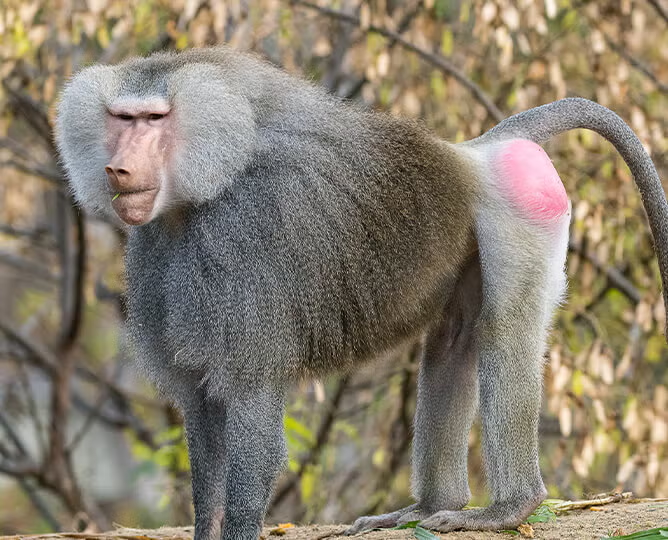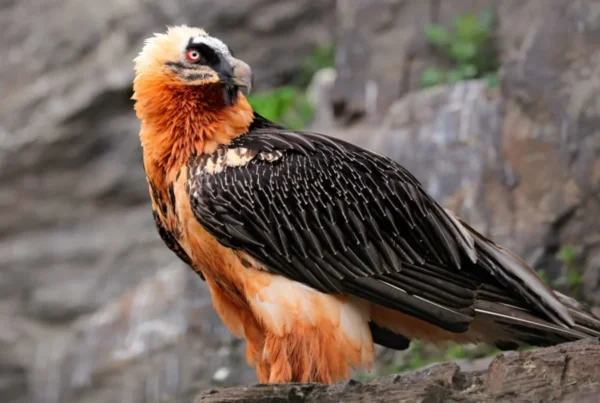5 Interesting Facts About the Baboon (Papio papio)
Facts About the Baboon
The Mischievous Minds of Africa: A Glimpse into the Baboon’s Wild World
Few creatures in the African wilderness command the same mix of curiosity, respect, and occasional amusement as the baboon. The species known as Papio papio, commonly referred to as the Guinea baboon, is an intelligent, social, and highly adaptive primate found in the western regions of Africa. With their expressive faces, sharp intellect, and intricate group dynamics, baboons are a remarkable symbol of the continent’s vibrant biodiversity. They often play the role of both entertainer and enigma in the safari experience, leaving guests intrigued by their antics and depth.
While many travelers are drawn to Africa to see the “Big Five,” those who take the time to observe the baboon will discover a creature just as fascinating. Far from being mere background characters in the great African drama, baboons are complex animals with rich emotional lives, intricate social hierarchies, and impressive survival skills. Their story is one of adaptability and evolution, making them a must-see subject for anyone interested in the wonders of the natural world.
Baboons Share Deep Social Bonds
One of the most compelling aspects of baboon life is their deeply structured social system. These primates live in large troops that can number up to 200 individuals, though most commonly they average around 30 to 80. Unlike many mammals whose interactions are primarily driven by competition and conflict, baboons operate through a web of alliances, kinship bonds, and established hierarchies. Within a troop, individuals form close friendships that are not just strategic but deeply emotional.
Grooming serves not only a hygienic function but is also a way of cementing relationships and reducing social tension. Younger males often form coalitions to challenge higher-ranking individuals, while females typically inherit their social ranks from their mothers, forming long-lasting matrilineal lines.
The social intelligence required to navigate this complex system is considerable. Baboons can recognize individual faces, remember past interactions, and adjust their behavior accordingly. These traits make them excellent subjects for scientific studies on primate cognition and the evolutionary roots of human social behavior. Their ability to mediate conflict, engage in reconciliation, and show empathy speaks to the profound emotional depth of these animals, traits that are not only fascinating but humbling.
Baboons Are Exceptionally Adaptable (Facts About the Baboon)
Perhaps one of the most impressive features of the Guinea baboon is its adaptability. These primates can thrive in a wide range of environments, from savannas and woodlands to semi-arid scrublands. They are both terrestrial and arboreal, spending much of their time on the ground but climbing trees to sleep or to escape predators.
This versatility extends to their diet as well. Baboons are omnivores with a broad palate, consuming everything from fruits, seeds, and grasses to insects, small mammals, and even the occasional bird egg. Their opportunistic feeding habits allow them to survive in habitats where food availability can fluctuate dramatically.
Such dietary flexibility has not only ensured their survival but has also made them capable of coexisting in landscapes altered by human activity. Unfortunately, this sometimes leads to conflicts with local farmers, as baboons are known to raid crops and scavenge in villages. Despite these tensions, their resilience and resourcefulness have made them one of the few primate species able to sustain stable populations in regions undergoing environmental stress. Their ability to adapt is not merely a testament to their physical endurance, but also to their intelligence and behavioral plasticity.
Baboons Exhibit Complex Communication
Communication among baboons is not only vocal but also visual and tactile. They possess an extensive vocal repertoire used for different purposes: alarm calls to warn of predators, grunts to maintain group cohesion, screams during fights, and even distinct sounds for greeting familiar individuals. But vocalizations are just one part of their communication toolkit. Facial expressions, such as lip-smacking and eyebrow raising, convey emotional states and intentions. Body posture and gestures also play crucial roles in interactions, signaling dominance, submission, curiosity, or aggression.
For example, a yawn from a male baboon might appear innocuous, but it often serves as a display of dominance, showcasing the sharp canines that can deter potential rivals. Grooming, as mentioned earlier, is a cornerstone of social interaction, reinforcing bonds and calming tensions. All these forms of communication are not mere instinct but appear to involve learned behavior and intentionality.
Understanding how baboons communicate offers not only insights into their society but also clues about the evolution of language and social intelligence in humans. Their behavioral richness adds another layer to the safari experience, especially when observed in their natural habitats where these interactions unfold in real time.
Their Societies Are Matriarchal Yet Strategically Male-Dominated
While female baboons form the stable core of the troop, male baboons play dynamic and often volatile roles. In Guinea baboons, the male social structure is particularly fascinating. Unlike in some other baboon species where males are transient and compete aggressively for dominance, Guinea baboon males exhibit a more tolerant and cooperative nature. They form strong social bonds with females and other males, which helps them maintain their status and father offspring. Interestingly, males often stay within their birth groups, contributing to a more stable and less combative troop structure.
This social configuration is unique among baboon species and has made the Guinea baboon a subject of great interest among behavioral ecologists. The implications are significant: cooperation, not aggression, can be a successful evolutionary strategy. It also challenges long-held assumptions about primate behavior, showing that even within a single genus, social systems can evolve in dramatically different directions. The Guinea baboon, in this regard, serves as a living laboratory for the study of primate—and by extension, human—social evolution.
Baboons Are Important to Ecosystems and Human Understanding
Beyond their own social intrigues, baboons play a vital ecological role. As both predators and prey, they are integral parts of the food web. Their foraging habits help in seed dispersal, influencing plant diversity and regeneration. By digging for roots and insects, they aerate the soil, indirectly supporting the health of the environment. Their presence also serves as an indicator of ecosystem health, as thriving baboon populations often signal a balanced habitat.
From a scientific perspective, baboons have contributed immensely to our understanding of social behavior, stress physiology, and primate evolution. Long-term field studies of baboons have shed light on the impact of social status on health, the effects of environmental pressures on group cohesion, and the parallels between primate and human societies.
For safari-goers and wildlife enthusiasts, observing baboons offers a profound opportunity to connect with nature on a cognitive and emotional level. They remind us of our shared ancestry and the evolutionary paths that have shaped the intelligence and emotions we often consider uniquely human.
See Baboons in the Wild With WildHorn Africa
To truly appreciate the complexity and charisma of baboons, one must observe them in their natural environment—where their behaviors, interactions, and vibrant personalities can be fully appreciated. WildHorn Africa specializes in curated safari experiences that go beyond the ordinary. With expert guides, personalized itineraries, and a commitment to conservation, they offer travelers the chance to witness wildlife like the Guinea baboon in a meaningful, immersive way.
Whether you’re watching a troop play along a riverbank at dawn or quietly observing their intricate grooming rituals beneath an acacia tree, the experience is unforgettable. Don’t settle for surface-level sightings. Let WildHorn Africa take you into the heart of Africa’s wild landscapes, where each moment is a window into the soul of the continent.
Book your African safari with WildHorn Africa today and meet the wild minds of Africa up close—it’s a journey that changes you. (Facts About the Baboon)
Facts About the Baboon #Facts About the Baboon Facts About the Baboon





 WildHorn Africa – Authentic and unforgettable tours across Africa, guided by local experts who know the land, wildlife, and culture best.
WildHorn Africa – Authentic and unforgettable tours across Africa, guided by local experts who know the land, wildlife, and culture best.


